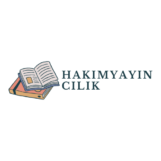Creative nonfiction often blurs the lines between fact and art, inviting readers into a world where reality is just as compelling as fiction. I’ve always found the literary tools employed in this genre to be more intriguing than those used in traditional fiction. Techniques like vivid imagery, immersive narratives, and personal anecdotes breathe life into true stories, making them resonate on a deeper level.
While fiction relies on invented characters and plots, creative nonfiction draws from real experiences, transforming them into powerful narratives. This unique approach not only captivates but also challenges readers to reflect on their own lives. Join me as I explore the fascinating literary tools that elevate creative nonfiction, revealing why they hold a special place in the literary landscape.
Key Takeaways
- Creative nonfiction merges factual storytelling with artistic techniques, making it distinctively engaging compared to traditional fiction.
- Key literary tools in creative nonfiction include vivid imagery, personal anecdotes, and symbolism, which enhance emotional connections and reader engagement.
- The use of real-life events and personal experiences grounds narratives in authenticity, fostering empathy and reflection among readers.
- Narrative structure, including nonlinear timelines and varied pacing, maintains reader interest and adds suspense to true stories.
- Dialogue and character development in creative nonfiction provide realism and depth, allowing readers to connect with real individuals in the narrative.
- Overall, the strategic application of literary tools in creative nonfiction transforms straightforward facts into compelling, resonate narratives.
The Literary Tools Used in Creative Nonfiction Writing Are More Interesting Than Those in Fiction.
Literary tools play a crucial role in creative nonfiction writing. They elevate factual storytelling into engaging narratives. Various techniques enhance the emotional impact and resonate with readers.
- Vivid Imagery: Utilizing descriptive language creates mental pictures. Vivid imagery allows readers to experience the narrative fully, making events come alive.
- Personal Anecdotes: Sharing personal experiences establishes a connection. Anecdotes provide authenticity, allowing writers to convey emotions effectively.
- Metaphor and Simile: Employing comparisons deepens understanding. These figures of speech enable readers to grasp complex feelings and ideas in relatable terms.
- Dialogue: Incorporating real conversations adds realism. Dialogue engages readers, making them feel a part of the story.
- Symbolism: Using symbols enriches meaning. Symbolism connects personal experiences to broader themes, enhancing the narrative’s depth.
- Narrative Structure: Adopting varied structures maintains interest. Nonlinear timelines or flashbacks create intrigue, encouraging readers to think critically about the events.
- Foreshadowing: Implementing hints builds suspense. Foreshadowing engages the reader’s curiosity, creating anticipation for future developments.
- Tone and Voice: Establishing a distinctive voice enhances relatability. Tone influences how the reader perceives the story, impacting emotional responses.
These tools make creative nonfiction a compelling form of writing. Their strategic use transforms straightforward facts into captivating narratives that invite reflection and connection.
Defining Creative Nonfiction And Fiction
Creative nonfiction blends factual narratives with artistic expression. Fiction, on the other hand, relies on imagination to create characters and plots.
Characteristics Of Creative Nonfiction
Creative nonfiction employs several distinct characteristics that differentiate it from other genres.
- Truthfulness: Creative nonfiction prioritizes factual accuracy while employing narrative techniques.
- Vivid Imagery: Descriptive language creates strong mental visuals, immersing readers in real settings.
- Personal Anecdotes: The use of personal experiences fosters authenticity and emotional connections.
- Literary Techniques: Tools like metaphor and simile deepen readers’ understanding of complex emotions.
- Realistic Dialogue: Dialogue adds a layer of realism, making stories relatable and engaging.
- Symbolism: Symbolic elements enrich narratives, allowing for multiple interpretations.
- Narrative Structure: The organization of content maintains reader interest through clear arcs.
- Investigation: Research-based elements provide background and context, grounding authors’ experiences.
Characteristics Of Fiction
Fiction distinguishes itself through various key characteristics that shape its storytelling approach.
- Imagination: Fiction relies on invented characters and scenarios crafted from the author’s creativity.
- Plot-Driven: Plots often follow traditional structures, including exposition, conflict, climax, and resolution.
- Character Development: Fiction delves into the complexities of characters, exploring their growth and motivations.
- Thematic Exploration: Fiction often tackles universal themes, prompting reflection on moral dilemmas and human experiences.
- World-Building: Authors create entire worlds with specific rules and logic, enhancing escapism for readers.
- Narrative Voice: A unique narrative perspective shapes storytelling, influencing how readers perceive characters and events.
- Symbolism and Subtext: Fiction employs symbols and subtext to convey deeper meanings without explicit statements.
- Dramatic Tension: Fiction regularly builds conflict and tension to maintain reader engagement throughout the narrative.
Analyzing Literary Tools In Creative Nonfiction
In creative nonfiction, the alignment of literary tools enhances the storytelling of real-life events. The strategic use of various techniques brings depth and engagement to the narrative.
Narrative Structure
Narrative structure in creative nonfiction plays a crucial role in shaping how stories unfold. Techniques like nonlinear timelines allow for suspense and intrigue, while chronological order provides clarity. I often notice that incorporating sections with varying lengths keeps the reader’s interest. Utilizing techniques such as flashbacks and foreshadowing enriches the narrative, creating connections that resonate emotionally with readers. Each choice in structure aims to enhance the flow and impact of facts while maintaining reader engagement.
Use Of Real-Life Events
Utilizing real-life events in creative nonfiction establishes credibility and emotional resonance. Personal anecdotes often serve as the backbone of these stories, making facts relatable. By grounding narratives in actual experiences, I create connections with readers that evoke empathy and reflection. These events can range from significant historical moments to simple, everyday occurrences that illustrate larger themes. The authenticity of details allows readers to immerse themselves deeply in the narrative world.
Character Development
Character development in creative nonfiction differs significantly from fiction, as it relies on real individuals. I find that crafting dynamic portrayals of people, highlighting their complexities, adds depth to factual storytelling. Utilizing direct quotations and descriptive details helps to bring characters to life. Engaging character arcs, whether focusing on personal growth or emotional struggles, allow readers to connect more intimately with the story. The layered portrayal of real individuals transforms basic facts into meaningful narratives, enhancing the overall reading experience.
Comparing Literary Tools In Fiction
Fiction employs various literary tools that shape narratives and engage readers. Understanding these tools highlights the differences in storytelling approaches between fiction and creative nonfiction.
Imagery And Symbolism
Imagery in fiction creates vivid mental landscapes that transport readers into fictional worlds. Authors use descriptive language to evoke sensory experiences, enabling readers to visualize scenes and feel emotions. Symbolism adds deeper layers to these narratives, allowing objects, characters, or events to represent larger themes or ideas. For instance, in a fictional novel, a withering tree might symbolize decay or loss, inviting readers to explore underlying meanings. Both tools enhance the narrative’s depth and generate emotional responses but often serve a different function than in creative nonfiction, where imagery and symbolism ground the story in reality.
World-Building Techniques
Fiction relies heavily on world-building techniques to create immersive settings. Writers establish intricate environments where characters exist, often defining unique rules, cultures, and histories. This craft engages readers, compelling them to lose themselves in the story’s universe. Techniques like detailed descriptions and elaborate backstories form a logically consistent framework that supports character actions and plot developments. Unlike creative nonfiction, where the setting reflects real-life contexts, fiction’s world-building often embraces imagination, allowing authors to explore boundaries that do not exist in reality. The balance between these techniques enriches narrative complexity, making readers invested in the fictional experience.
Why Creative Nonfiction Tools Are More Interesting
Creative nonfiction employs unique literary tools that enhance the reader’s connection to reality and evoke emotional resonance. These elements transform factual narratives into compelling stories that invite deeper engagement. The literary tools used in creative nonfiction writing are more interesting than those in fiction.
Connection To Reality
Connection to reality stands as a cornerstone of creative nonfiction. By grounding narratives in actual events and experiences, it fosters authenticity that fiction often lacks. Real-life details, such as specific locations, names, and timestamps, anchor the narrative in the reader’s world. Techniques like personal anecdotes bring everyday situations to life, making them relatable. This connection enhances a reader’s ability to see themselves within the story, creating a shared experience that resonates on a personal level. The blending of factual elements with storytelling techniques allows readers to navigate complex truths, leading to greater understanding and reflection.
Emotional Resonance
Emotional resonance emerges through the application of literary tools in creative nonfiction. The use of vivid imagery paints evocative scenes, allowing readers to experience emotions as if they were present during the events. Personal anecdotes, rich with detail, provide intimate glimpses into real moments, inviting empathy and connection. When the narrative incorporates dialogue, it captures authentic voices that deepen emotional engagement and provide added layers of realism. This emotional appeal fosters a sense of connection between writer and reader, prompting reflection on similar experiences or feelings within the audience. Ultimately, these elements galvanize readers to not only absorb information but to feel the weight of the truths being conveyed.
Nonfiction Artistry
Creative nonfiction captivates me with its unique blend of truth and artistry. The literary tools used in creative nonfiction writing are more interesting than those in fiction. The literary tools employed in this genre not only breathe life into real experiences but also foster a deep connection between writer and reader. By using vivid imagery and personal anecdotes, writers can transform straightforward facts into compelling narratives that resonate on a personal level.
It’s this authenticity that sets creative nonfiction apart. The emotional depth and relatability found in these stories invite us to reflect on our own lives and experiences. As I continue to explore this genre, I find that the literary techniques used in creative nonfiction offer a richness that often surpasses traditional fiction, making it a powerful form of storytelling.

